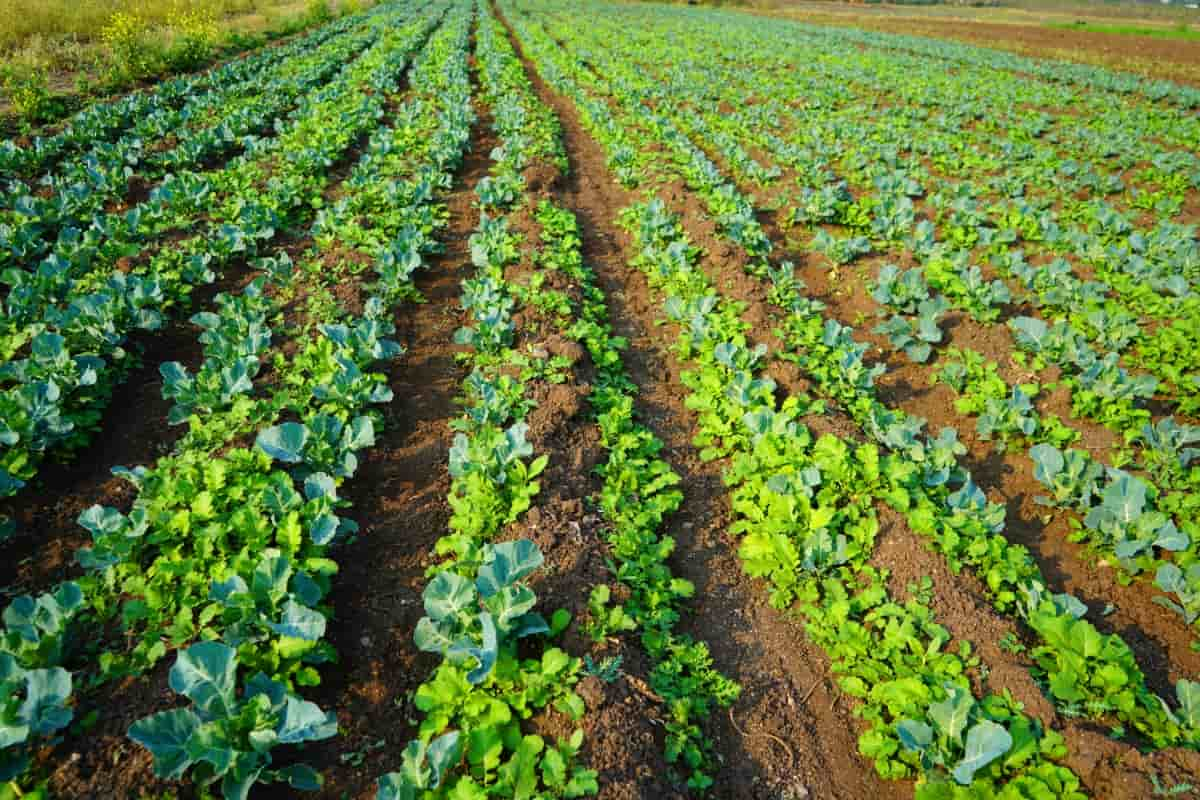Organic farming has gained significant attention in recent years as the demand for organic products continues to grow. More farmers in the United States are turning to organic farming as a viable business opportunity. This article will discuss the essential components of an organic farming business plan, the potential profits, and the financial requirements to start a successful organic farming operation.
Organic Farming Business Plan in the USA
Market Research and Analysis
A thorough market analysis is the first step in creating an organic farming business plan. Conduct research on the demand for organic products in your region, the target customer base, and the competition. This information will help you identify the right crops to grow and determine the best sales channels, such as farmers’ markets, wholesale distributors, or direct-to-consumer sales.

Next, examine the organic certification process, which is essential for marketing your products as organic. Familiarize yourself with the USDA’s National Organic Program (NOP) and ensure that your farming practices meet their standards. Additionally, consider seeking support from local organizations specializing in organic farming, such as Cooperative Extension offices or associations.
Business Structure and Management
Choose a suitable business structure for your organic farming operation, such as a sole proprietorship, partnership, or limited liability company (LLC). Each structure offers different levels of liability protection and tax implications. Consult with a business advisor or attorney to determine the best option for your situation.
Develop a management plan outlining the roles and responsibilities of each team member. Define a clear organizational structure and establish effective communication channels. Ensure that your team has the necessary skills and expertise in organic farming, marketing, and business management.
Selection of Crops
Select the right crops based on your market research, climate, and soil type. Diversify your crop portfolio to minimize risks and ensure a stable yearly income. Consider crop rotation and intercropping strategies to maintain soil fertility and manage pests and diseases. Adopt sustainable organic farming practices, such as composting, green manures, cover crops, and biological pest control. These practices help maintain soil health and biodiversity and reduce dependence on synthetic inputs, lowering the overall production cost.
Marketing and Sales Strategy
Develop a comprehensive marketing and sales strategy to promote your organic products effectively. Make a strong brand name that shows what your farm stands for and how committed it is to sustainable farming. To reach your target audience, utilize various marketing channels, including social media, websites, email newsletters, and local events. Establish relationships with wholesalers, retailers, and food processors who are interested in organic products. Attend industry events and join organic farming associations to network with potential buyers and stay updated on market trends.
Organic Farming Business Profit
The profitability of an organic farming business depends on several factors, such as crop selection, yield, production costs, and market prices. Generally, the average profit margin for organic farms in the United States was around 5-7%, with some farms reporting margins as high as 20%. Organic farms generally have lower yields than conventional farms but benefit from premium product prices.
For instance, an organic vegetable farm might generate $40,000-$60,000 per acre in revenue, while a conventional farm may only produce $20,000-$30,000 per acre. With lower input costs and premium prices, an organic farmer can expect to make a profit of $10,000-$15,000 per acre.
In case you missed it: Soil Management for Organic Farming

Financial Plan
A comprehensive financial plan is essential for the success of your organic farming business. Start by estimating the initial investment needed to establish the farm, including land acquisition or lease, infrastructure, equipment, and initial working capital. The cost of starting an organic farm varies widely depending on the scale, location, and type of crops grown. On average, a small to medium-sized farm will cost between $100,000 and $500,000.
Next, project your income and expenses for the first few years of operation. Consider the revenue from crop sales, grants, subsidies, and the costs of seeds, compost, labor, insurance, certification, and marketing. Preparing a cash flow statement, balance sheet, and income statement is essential to assess your business’s financial health and identify potential risks.
Money Requirement to Start an Organic Farm
The amount of money required to start an organic farming business depends on the scale of the operation, location, and the type of crops you plan to grow. Here’s a rough breakdown of some initial costs to consider:
- Land acquisition or lease: The cost of land varies significantly based on location, accessibility, and quality. In some areas, farmland can be leased for as low as $50 per acre per year; in others, it can cost over $300 per acre. Purchasing land can range from $1,000 to $10,000 per acre.
- Infrastructure: Investments in infrastructure, such as barns, greenhouses, irrigation systems, and fencing, can range from $30,000 to $150,000 or more, depending on the size and complexity of the farm.
- Equipment: Essential farm equipment, such as tractors, tillers, and harvesters, can cost between $20,000 and $100,000, depending on the scale of your operation and whether you choose new or used equipment.
- Initial working capital: To cover the costs of seeds, compost, labor, and other operational expenses, you should have at least $10,000 to $50,000 in initial working capital.
- Certification and licensing: Obtaining organic certification can cost anywhere between $500 and $2,500, depending on the certifying agency and the size of your farm. Additional licensing and permits may also be required, costing several hundred dollars.
Given these expenses, you may require anywhere from $100,000 to $500,000 or more to start a small to medium-sized organic farming business. Remember that these estimates can vary widely based on your specific situation and location. It’s crucial to conduct thorough research and create a detailed budget to determine the exact financial requirements for your business.
In case you missed it: Ultimate Guide to Start an Organic Hydroponic Vegetable Garden: Creating from Scratch for Planting to Harvest

Conclusion
Starting an organic farming business in the United States can be lucrative and rewarding if you carefully plan and manage it. Conduct thorough market research, develop a comprehensive business plan, and adopt sustainable farming practices to maximize your chances of success. With the increasing demand for organic products, there is ample opportunity for new organic farms to enter the market and contribute to a healthier, more sustainable food system. This organic farming business plan will be useful if you live in the following states in the US.
| Alabama | Iowa | Nebraska | Rhode Island |
| Arizona | Kansas | Nevada | South Carolina |
| Arkansas | Kentucky | New Hampshire | South Dakota |
| California | Louisiana | New Jersey | Tennessee |
| Colorado | Maine | New Mexico | Texas |
| Connecticut | Maryland | New York | Utah |
| Delaware | Massachusetts | North Carolina | Vermont |
| Florida | Michigan | North Dakota | Virginia |
| Georgia | Minnesota | Ohio | Washington |
| Idaho | Mississippi | Oklahoma | West Virginia |
| Illinois | Missouri | Oregon | Wisconsin |
| Indiana | Montana | Pennsylvania | Wyoming |
- Feed Your Flock for Less: Top 10 Tips to Save on Chicken Feed
- Ultimate Guide to Ossabaw Island Hog: Breeding, Raising, Diet, and Care
- Hatching Answers: The Top 10 Reasons Your Chickens Aren’t Laying Eggs
- Eggs and Economics: Breaking Down the Cost of Raising Backyard Chickens
- Defend Your Greens: Proven Methods to Keep Iguanas Out of Your Garden
- Ultimate Guide to Cinnamon Queen Chicken: A Comprehensive Guide for Beginners
- Ultimate Guide to California Tan Chicken: Breeding, Raising, Diet, Egg-Production and Care
- Ultimate Guide to Marsh Daisy Chicken: Breeding, Raising, Diet, and Care
- 10 Types of Chicken Farming Businesses You Can Start for Profits